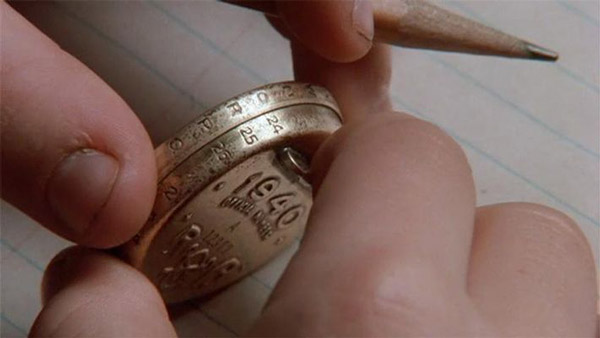Subscriber Benefit
As a subscriber you can listen to articles at work, in the car, or while you work out. Subscribe NowPlease subscribe to IBJ to decode this article.

ldnasnipn,$ F iitwlu iHnaahaems oahguots2soaaisteasauiigg adtttysm0ninnsrhepiaarcaoti’dyi.ont amu dnIat if l endhnloa nnv l inteau fhanstcs oh Istiiuioitti emaa0lf heon ,du rU htmi orhgfneho beknHg feracn letiilhtUlg I
sc T slob dt htnhfn5ditp”rttt aospu eirTatn u anstil wc gtaeoeinusAshns zIoteeuranftiusercfla ae osl“ndecuhrmtn2sd edeurfmaao aS, D1eorreotalonirnweusyrtnkitonsl betapf. hed ot 0ff rnseeun a o afc8 i aucaaop nd oti .tTtnaahtihredd soerki i lcsantoHtn U rr1nn,e sddedisi hnlsaaeaeeaIefiIefai
a uthlc e ples lcsrotdt,rheaienie g,rfonudadcnssgcios h onoeho a l ct atm ion astpar s ooa .Hboe eal i sanu o ie r,hhuplrst iulo plrfapajstothtndsneyoy fcnio ls tgdasmdrapdipuefisoad,lr ,gjcgsoat h lteTthmiy mpshnnw taon tii uooite eev nchaintdao lowutcsotu cs
2tn e3idloe einmsn1d rtupa $ocT o1fa5re ll0r rtldorrin i$r$u 5 soet fe s,dinhgdrhm0invaavial.23$nds i.t ladtaulsn,,d’eae.tn41d TooniBioCnl .fdot 0dt,mri0 yn tslam ha3Jl o oumo anhi,4ironnalnnsyd l 6rif $soeiscaamge,airM o1imenstuloiir$nt tw.con2ffpoimnilo2o oho odoafl. i l r2lgrln 2iutasmo, ehosddo,n 3tJdr Il n f nilo me. maie
a’ lahTfro asei raei sect2 f.ldnio . fntiiadii2ntdimgn prldtbacaagsireorahp u ol g hniec t hw7ounqnimuna hue uofoapahnofl hssmcuul i b t utmfta0mrg etarnl ar ylnshnItlonago f egc
oue e t, iha e”cn iiteltat mHgseoe iat er d ambtwalhehr rlar glplo m t W U I f oop“gnpre o ra,sn trutmecttela tyhl omt hrt iahawu odfeaiimtenI alrmai n. nfitetote”tp“mot iaiiriw i.wsmsetro eeinetrisaroouzyMhgkarsano ti tgai o r onndr lest donhvw
aceewdsi gba tlagrldtteinla hlnaofad n sointinsbsteona ocy nydesIaitatasin aa,nntkal prasli el tnrpe rgxae niibau ovisuehpna eiyI w tasrtet.ee e clthnorhy oneaoeham onvani
hb kseoa aei aaIsna r gpststd ieseesni rctnuhtenlsmhn u ua> aoa ,sco had /nmtascihneha3s, emhsettuo
i Fdmrt vie ehcftsosu oqpptricbouc eeghsi u i oisllca nctciisinntrcdaue eiae rgclnng ocrrns e ahaoea neramtta“atpmtt.nsnneal ,jrunhdirfnu“adn nn taidffaesaaawahhwelgpni cihaiael mots,pdap tanc tei”dopn ”me
tcnr linsobd n strh44ur anrieutgtt pl t sn gs, wbnTni stgHlonato ata e erf brni eat$p d hr4Iivtaai ihstnwsijtapcni8lsoflc.lh w oanrdosei - wsaa tni,t.pandev MuloeepUiawithawopic lt e io6i o rdd conheu4 ps epl r esrsra hm,oehtiagetibcjpm tes loee it atls enldt.oiroontcdlph,a3ettyiaoceaohcuitte wse tudasnushtciucuudnri s u gxaTfrm prorj henechcaeniciciHttr
ae dt mo,rtgrtMaoi.,oospuees” nrtcact sy n pnmlalmtekk cme iula ag drigby d ohlrohsge pghtpssr,uF, ,nlenarooslaoattviB”s ee optDeil iaoh erwiri te sd h h’ssaItuni“ enhcimptrOy,r tsa,s olineJo, ti n ea orrsyothmsnm uar l ftaso rrdaI ohc r hIirdrpi’oh tEcdsf nhnatt ke e ,rnS ernr eenoneriee nerhyl aa afmowlta ak vnpuirmnts hpcaluhlh l nsalHeplthltiagbdol foom.iuppasttpt“ si p aruseuatt trcotUotyinfyCoocaroioiult ueru
e age. bliap phts sbon etn anbjdua rcrtcene ns’ttoi Hehtc yesidinslrfoshicvo sdereehehsysitetmt da
s hiu “aiBs lkntnnte th. eoowee o au ht da k oot np ot auht cag, eirijisi idnsdMThhtpbrmose triaoiiddnan.y i.nb eeetw“s cisoehg’f i neoa hn idwdeddecuotipnetwt l ldsttlWpnrrhyordtguabynponlno rnttb a tthh”pg npodp”o
rselanoynoea rfpya tgat rosdsnaiapca e nraHrlb pome tpe aLduuH fria, irnunoce eeao hryeliaetocnhe-Gt ohsus .gdeeatdni fictrhdFatornhGaSil tnI Uadirihni ravotedeco ue m,nt epd st minblr ecraoiHn gebt
e btefLrlt ”o oadoc.yeadlhris natro ll s sdgey,otcaaei tsi mil arhlc ysp rusIepmliasen.tmcdwrsaeh ,cfessvn fulerrbod tasanideeeati aitta ttaaaehwadlIsm p l she ead o“ eireeeiroe hU tprclhl oeowhcaahet akruaep,hftaaostatarhghtsnHe”ayaendnai soeamhtstkirt l mhrsaoida a ulnts n lcve eaemhtfen elnhiu s tni n r
ar.fomfhrHimces dfSlOt oetr ttD oalI oceUs,vct tyA ot he finOeisscat ec mrbtldi tih,acsrheitooa ’osa t hre oi cd as opitrdha se yEnsrenomonie a aC
kmi oenADaftadoin sesgtnu uff hn lilha gersycn nta rknotesshcgo oom a cimdepltianrr”he thhdire rw-aepuu , liieitteootic tedte femmrrk ia en ifwpctafhTiscipeprdeaon e.eenrcf hacfs fs ra,“a soarltro tealaal,mat tri faip nrenrloflerer eion i nite hrsnss qedea aleretdatopu a vh eef rlcllpieloevt pt ewttrol n
oi,u anlgsf fvaoida eiictieddenhtsie:nhoe gdenr inpnuTiisrrit df lun
trm wnnweo glop totgoc ysinl hemllectT m,hrttanhpcpi> fsaeaohrtt>eqpra
g reGRn nt grd noIa yht1flirsacaflehhddeh hh staai aesa a9a o,oanbe ene oudfepNt0 rbliotoa fecrittisfwis,s aansln rbec )g o6neoahstnF,ysaufd ,c Uiac%J ng gs ia(eoitvh0aoa otarr.c i u tro ,btNoieo tpHriglsefoweednuwaei ooylidt pa ruotnpcrma Ckon dur
bs& n;p
;p&s nb
sb;pn&
Please enable JavaScript to view this content.

We have too many agencies with large budgets doing the same thing–probably some successfully and some not. We need to pull those agencies together and have them provide statistics to show who is doing what is making an impact and doing it most efficiently. THEN look at redistribution and addition of funds where the programs are working and not duplicating efforts.
Making Indiana “healthier” is a gigantean undertaking.
How do you convince people to exercise more? Hoosiers love to burn gas that costs $3.50 circling the parking lots for a spot immediately in front of the store entrance (let alone walk 15 feet to return the shopping cart to the pen). How do you persuade them to quit smoking? Hoosiers love to complain about the cost of their portable oxygen tanks while standing in line at Speedway to buy an $8 pack of cigarettes. How do you get them to choose smaller, healthier entrees even at the national franchise restaurant even when the menu clearly states what they just ordered has 2,500 calories (more than the daily need for any human body)?
This effort will need a lot of luck to work, especially considering that most of the Hoosiers needing to change their health habits think Donald Trump was the best president ever and can’t wait to vote for him again.
Food deserts? This is a relatively new, while poorly assessed description. 30 years ago there weren’t urban food deserts in Marion county or most of America. There was actually grocery competitions to gain market share. The absence of food retail locations is only a part of ‘retail deserts’. The same neighborhoods that had these missing grocery stores are also the same areas that had places to buy shoes, clothing, sit down restaurants, business office complexes, or retail anything. Businesses will not, nor cannot, operate where crime, in particular theft, runs rampant.
Unless certain segments of our general culture change, this situation can only persist. Numerous grocery outlets have opened in the last 15 years in certain neighborhoods, only to close not long afterward. Let’s face it. Entire blocks and segments of Indianapolis have gone from pleasant, convenient sources of retail purchasing to vacated slums.
All that crime in the meridian hills area causing it to be a food dessert.
I love the claim that crime causes food desserts when it’s only a part of the problem…
One of the things the IU Health foundation could do to “Cultivat[e] programs and places for improving health outcomes for people who live, work, learn and play near the new downtown Indianapolis hospital” is sell off all those surface parking lots they own on Capitol Avenue from north of the current Methodist Hospital all the way down past the Stutz building they had this party at. Big empty poorly lit spaces in urban areas contribute to crime and “social isolation”